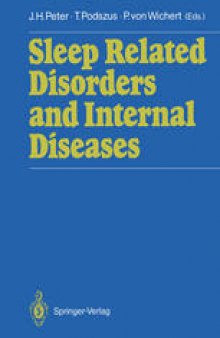 جزییات کتاب
جزییات کتاب
The normal function of the organism in various stages of activity can be seen as a process of mutual interaction of different regulation mechanisms building up the behaviour of the organism in changing situations and/or ages and/or levels of health or disease. Insights into these very complex relations which steer the action of the organism are particularly important for the study of internal medi cine. They can be seen as directly related to the understanding of pathological conditions. Recently, the medical community has focused its interest on the physiology and pathophysiology of events which happen during sleep. Although some information on pathological regulation during sleep was collected in the 1930s, the modern technology of registration methods is required to analyse the pheno mena of sleep-related physiological and pathophysiological patterns. It is intere sting that the modern research in this field developed from neuropsychiatry and is now expanding into other fields of medicine, although some problems, for instance the Pickwickian syndrome, were also for a long time considered part of the field of internal medicine. It becomes clearer that sleep is not only a neuro psychiatric phenomenon, but also has profound consequences for other physio logical circuits, perhaps even an important role in pathogenesis. Sleep also has profound consequences for internal diseases. This was shown very clearly recently by many groups, although their data have not yet received the attention which they deserve.



 دانلود کتاب
دانلود کتاب

 جزییات کتاب
جزییات کتاب





 این کتاب رو مطالعه کردید؟ نظر شما چیست؟
این کتاب رو مطالعه کردید؟ نظر شما چیست؟
